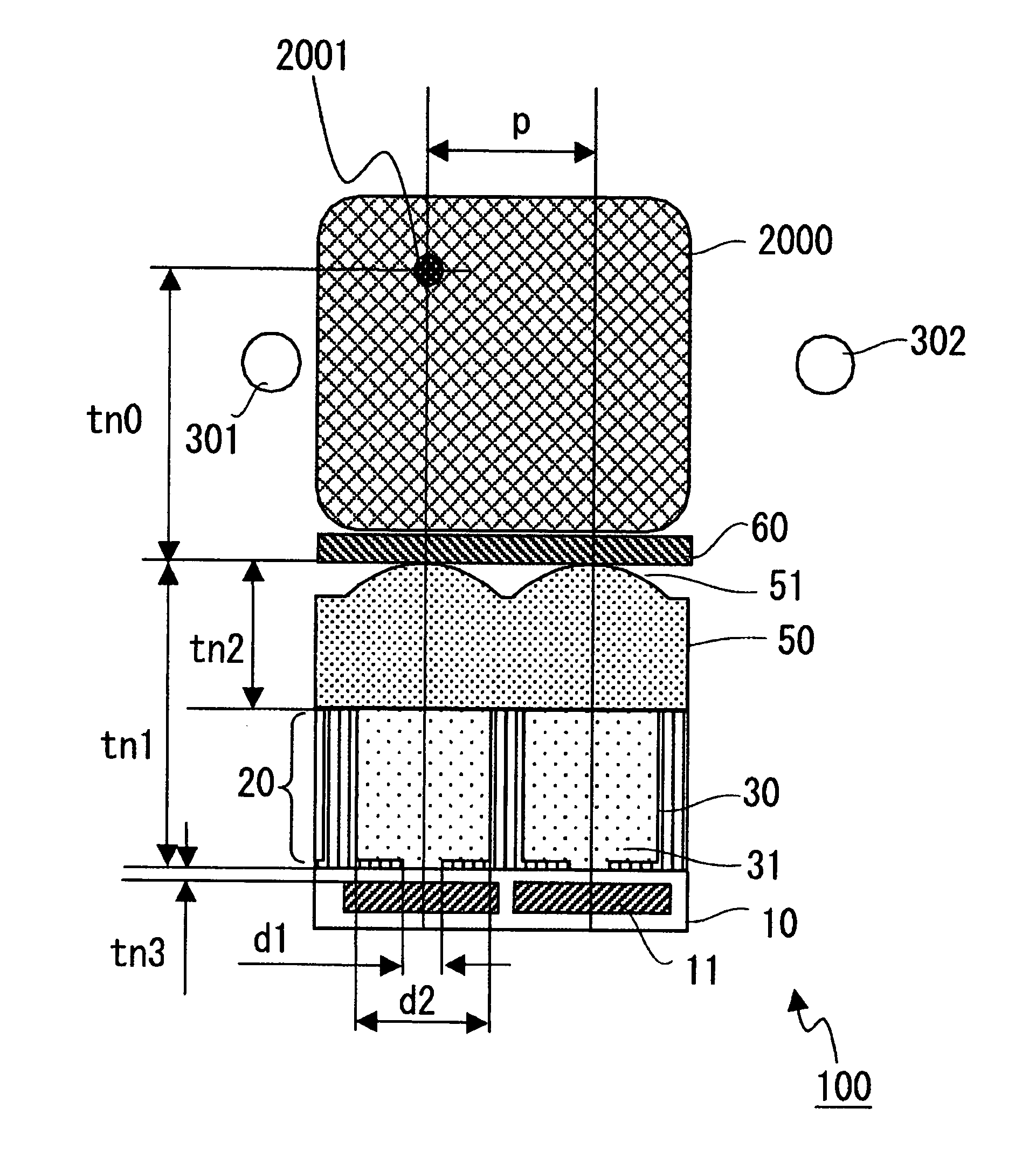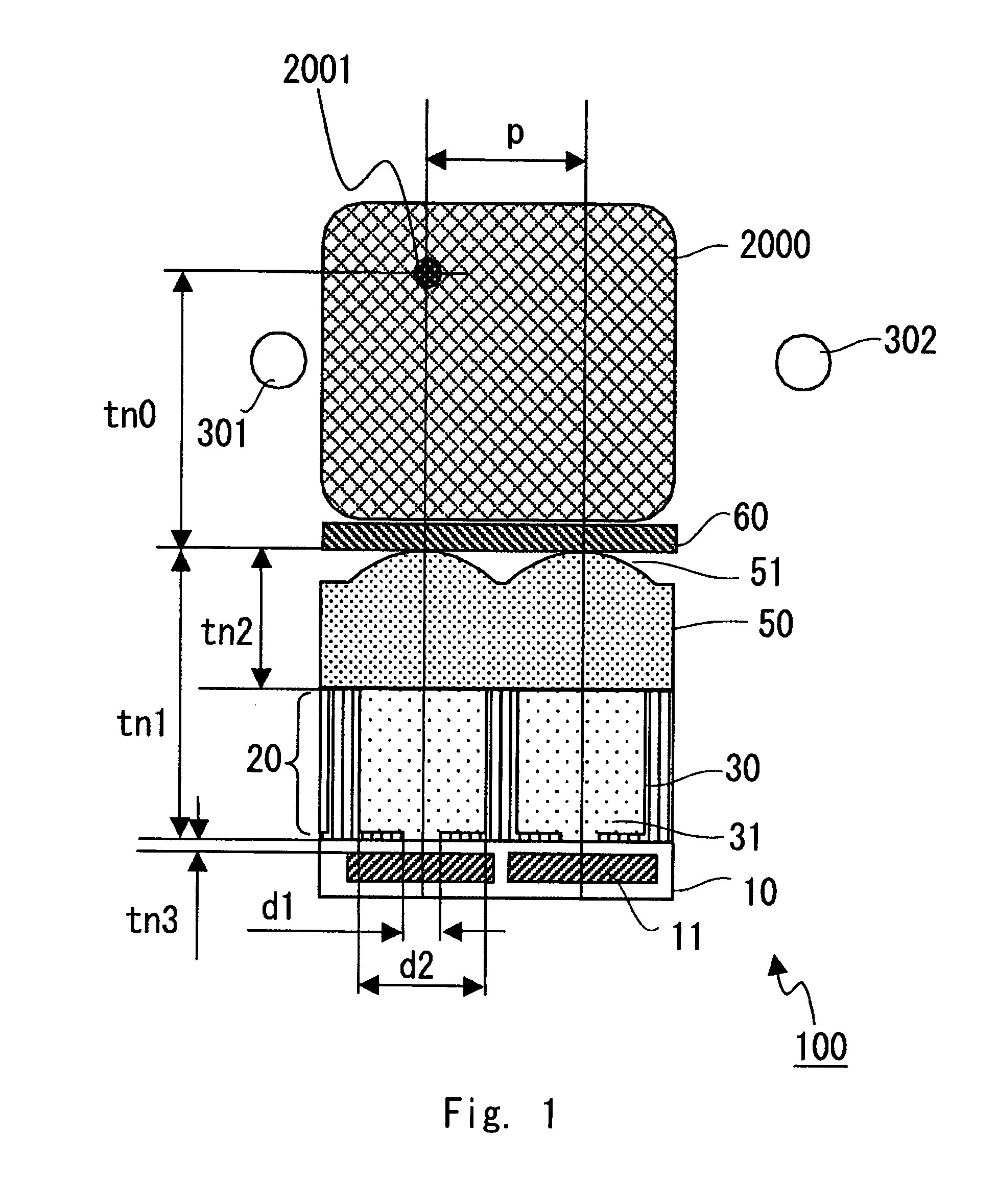Imaging device and biometrics authentication apparatus
a biometric authentication and imaging device technology, applied in the field of imaging devices and biometric authentication apparatuses, can solve the problems of low risk of a threat to safety and security due to theft or the like, low possibility of forgery, and reduce the possibility that a person who undergoes the authentication process feels psychologically stressed, so as to achieve the effect of suppressing the occurrence of nois
- Summary
- Abstract
- Description
- Claims
- Application Information
AI Technical Summary
Benefits of technology
Problems solved by technology
Method used
Image
Examples
first embodiment
[0081]The structure of a biometric authentication apparatus according to a first embodiment of the present invention is described hereinafter. FIG. 1 is a sectional view schematically showing the structure of an imaging device of the biometric authentication apparatus according to this embodiment. FIG. 2 is a block diagram showing the configuration of the biometric authentication apparatus according to an embodiment of the present invention. The dimensions shown in FIG. 1 indicate actual lengths.
[0082]Referring first to FIG. 2, a biometric authentication apparatus 1000 according to the first embodiment of the invention includes an imaging unit 100, an image processing unit 200, light sources 301 and 302, a storage unit 400, a collating unit 500, and a control unit 600.
[0083]The imaging unit 100 is connected with an image processing unit 200. The imaging unit 100 captures an image of a pattern of vein 2001 of a finger 2000 (biometric information). Near-infrared rays from the light so...
second embodiment
[0168]The structure of a biometric authentication apparatus according to a second embodiment of the present invention is described hereinafter. FIG. 4 schematically shows the structure of an imaging unit 101 in the biometric authentication apparatus of the second embodiment. The dimensions shown in FIG. 4 indicate actual lengths.
[0169]In the first embodiment, a plurality of microlenses 51 are formed on the upper surface of the microlens array 50. On the other hand, in the second embodiment, a plurality of microlenses 51 are formed on the lower surface of the microlens array 50 as shown in FIG. 4.
[0170]Further, in the first embodiment, the optical filter 60 is a separate component from the microlens array 50. On the other hand, in the second embodiment, a visible light absorbing layer 80 and a hard-coat layer 70 are formed on top of the microlens array 50 as shown in FIG. 4. The optical filter 60 is thereby integrated with the microlens array 51. The visible light absorbing layer 80 ...
third embodiment
[0194]The structure of a biometric authentication apparatus according to a third embodiment of the present invention is described hereinafter. FIG. 5 schematically shows the structure of an imaging unit in the biometric authentication apparatus of the third embodiment. The dimensions shown in FIG. 5 indicate actual lengths. In the embodiments to be described in the followings (the third to fifth embodiments), a biometric authentication apparatus is used in the wavelength range of 600 nm to 1200 nm. In the following embodiments, the effects of parameters are examined in further detail than in the above-described embodiments.
[0195]The structure of an imaging unit 102 of this embodiment is briefly described hereinafter with reference to FIG. 5. The imaging unit 102 includes the photoreceptor portion 10, the light shielding layer 20, the microlens array 50 and the optical filter 60, which are arranged in this order.
[0196]In the photoreceptor portion 10, a plurality of photoreceptors 11 ...
PUM
 Login to View More
Login to View More Abstract
Description
Claims
Application Information
 Login to View More
Login to View More - R&D
- Intellectual Property
- Life Sciences
- Materials
- Tech Scout
- Unparalleled Data Quality
- Higher Quality Content
- 60% Fewer Hallucinations
Browse by: Latest US Patents, China's latest patents, Technical Efficacy Thesaurus, Application Domain, Technology Topic, Popular Technical Reports.
© 2025 PatSnap. All rights reserved.Legal|Privacy policy|Modern Slavery Act Transparency Statement|Sitemap|About US| Contact US: help@patsnap.com



